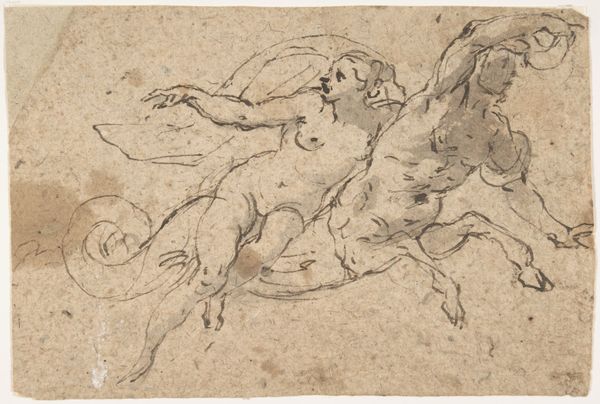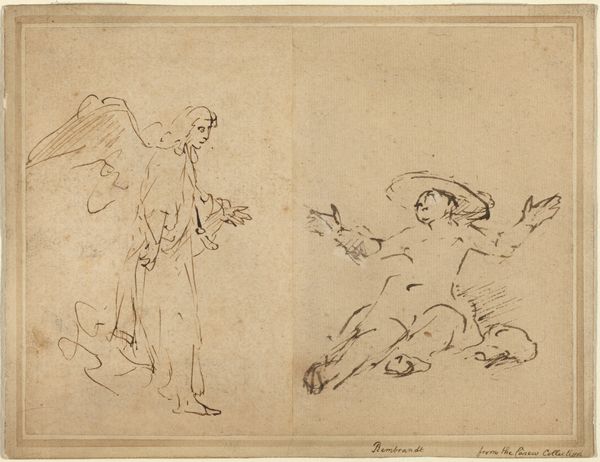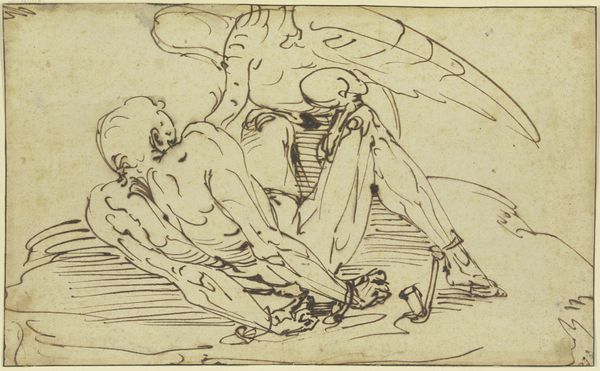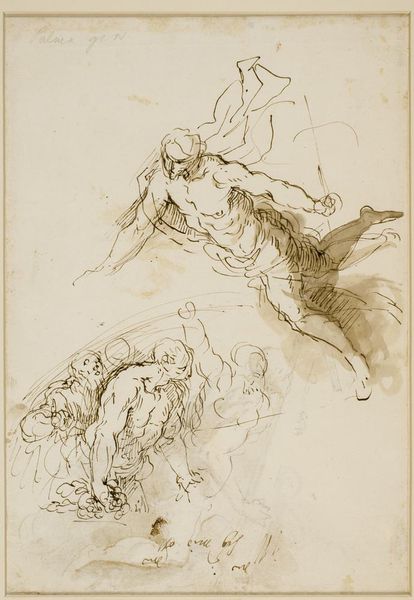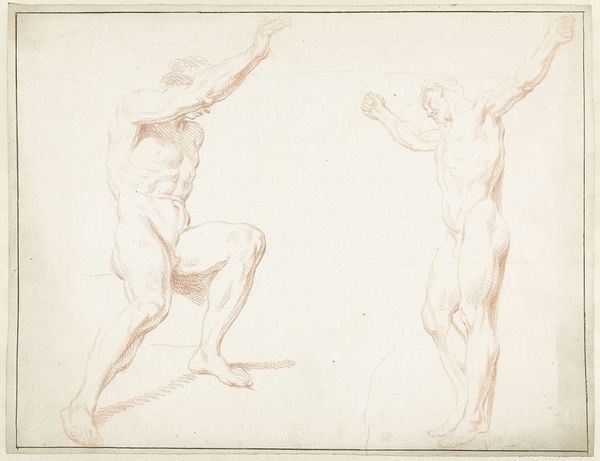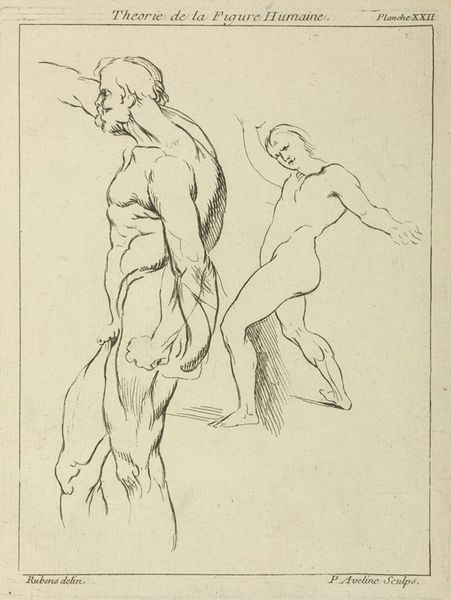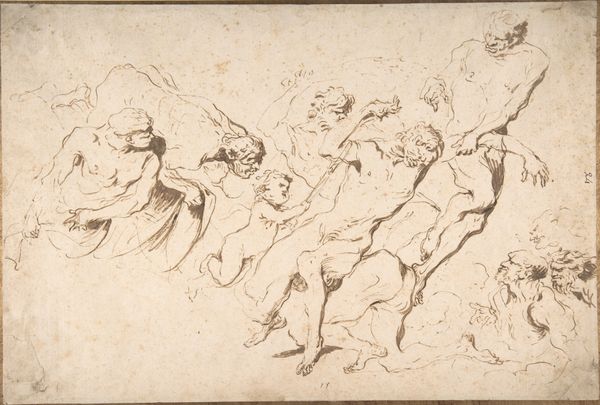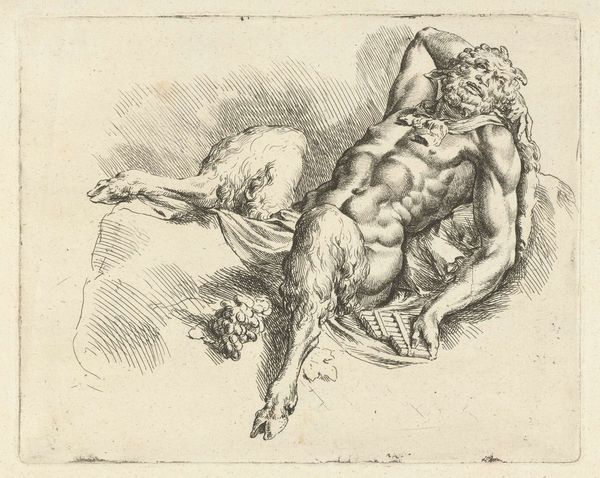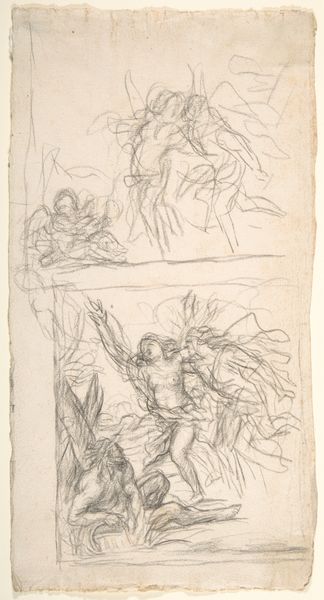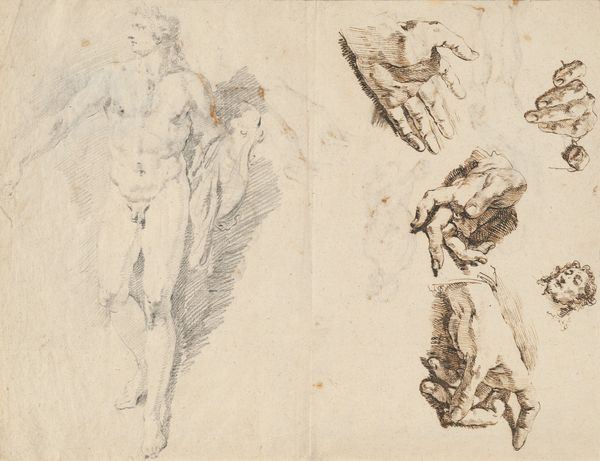
Study of Napoleon on Horseback with Sketches of Nudes Among Rocks 1813 - 1814
0:00
0:00
drawing, paper, ink, graphite, pen
#
portrait
#
drawing
#
narrative-art
#
figuration
#
paper
#
ink
#
romanticism
#
graphite
#
pen
#
history-painting
#
academic-art
#
nude
Dimensions: 174 × 225 mm
Copyright: Public Domain
Curator: Here we have Théodore Géricault's "Study of Napoleon on Horseback with Sketches of Nudes Among Rocks," created around 1813-1814. It’s currently held here at the Art Institute of Chicago. Editor: It's like catching a glimpse into his mind! Such dynamism, though unfinished. A blend of power and vulnerability swirling on paper with pen, ink, and graphite. The Napoleon figure is faint like a ghost; it makes one consider fleeting victories and enduring human form. Curator: Indeed. Consider the juxtaposition. The figure of Napoleon, presented almost as an afterthought, sketched lightly, in contrast to the more robust, defined nudes. It compels us to deconstruct prevailing ideals of heroism, contrasting military might with the timelessness of the human body. Observe the lines, how the hatching defines form, especially in the figures on the rocks, embodying the ideals of Romanticism through heightened emotion. Editor: Right! There's this tension, this dance between impermanence, hinted at with Napoleon, and enduring existence in the nudes. The composition vibrates, literally, between sketches and the finished form—leading with bold strokes around those gorgeous nudes as well as fainter lines portraying the doomed emperor. Géricault uses this space to express grand historic ambitions set against elemental, human nature. And what’s with the title? "Study of Napoleon"? Yet your eye's snagged elsewhere—cheeky and a bit perverse. Curator: Precisely. Géricault cleverly subverts expectation, prioritizing these figures divorced from narrative. Structurally, the rocky ground and shading also perform double duty, literally grounding these men, who might feel less imposing otherwise, while simultaneously contrasting the lack of similar treatment afforded to the political leader, positioned as he is off to the side of the work. Editor: The piece reads as a fragment, a rehearsal, rather than a final act—allowing us the privilege of feeling party to its creation! He offers the heroic alongside the vulnerable. How clever and generous of him. Curator: He provides us space for interpreting multiple positions, which is itself a progressive act. In his layering of themes and styles, we witness more than merely technical prowess but a layered interrogation. Editor: The sheer energy distilled within those ink strokes remains captivating. It's a beautiful collision of historical might with primal beauty.
Comments
No comments
Be the first to comment and join the conversation on the ultimate creative platform.


